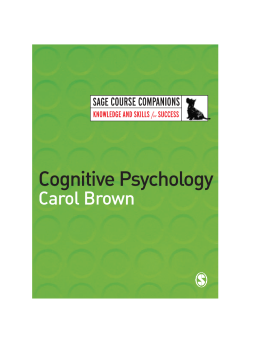
Additional Information
Book Details
Abstract
Cognitive Psychology provides student readers with essential help with all aspects of their first course in cognitive psychology, including advice on revising for exams, preparing and writing course assessment materials, and enhancing and progressing their knowledge and skills in line with course requirements on a cognitive psychology course.
Table of Contents
| Section Title | Page | Action | Price |
|---|---|---|---|
| ACKNOWLEDGEMENTS vi | |||
| 1. Introduction 1 | |||
| 2. Factors affecting strength and thermally-induced stresses 2 | |||
| 3. The tendency of stoves and stove liners to fail from thermally-induced stresses 4 | |||
| 4. The effect of the clay/non-clay ratio on stove behaviour 5 | |||
| Dying shrinkage and strength after firing 5 | |||
| Effective porosity, strength and thermally-induced stresses 5 | |||
| The anisotropy of shrinkage and residual stress development 6 | |||
| 5. Avoidance of thermally-induced stress failure 8 | |||
| 6. Selection and preparation of clay bodies for stove manufacture 10 | |||
| Determination of clay/non-clay ratio in natural clay body 10 | |||
| Theoretical background on separation of the clay fraction below 2um 11 | |||
| Test procedure 12 | |||
| Adjustment of clay body 14 | |||
| 7. Testing the effects of adjusting the clay/non-clay ratio 15 | |||
| APPENDIX | |||
| Equipment and facilities 17 |
